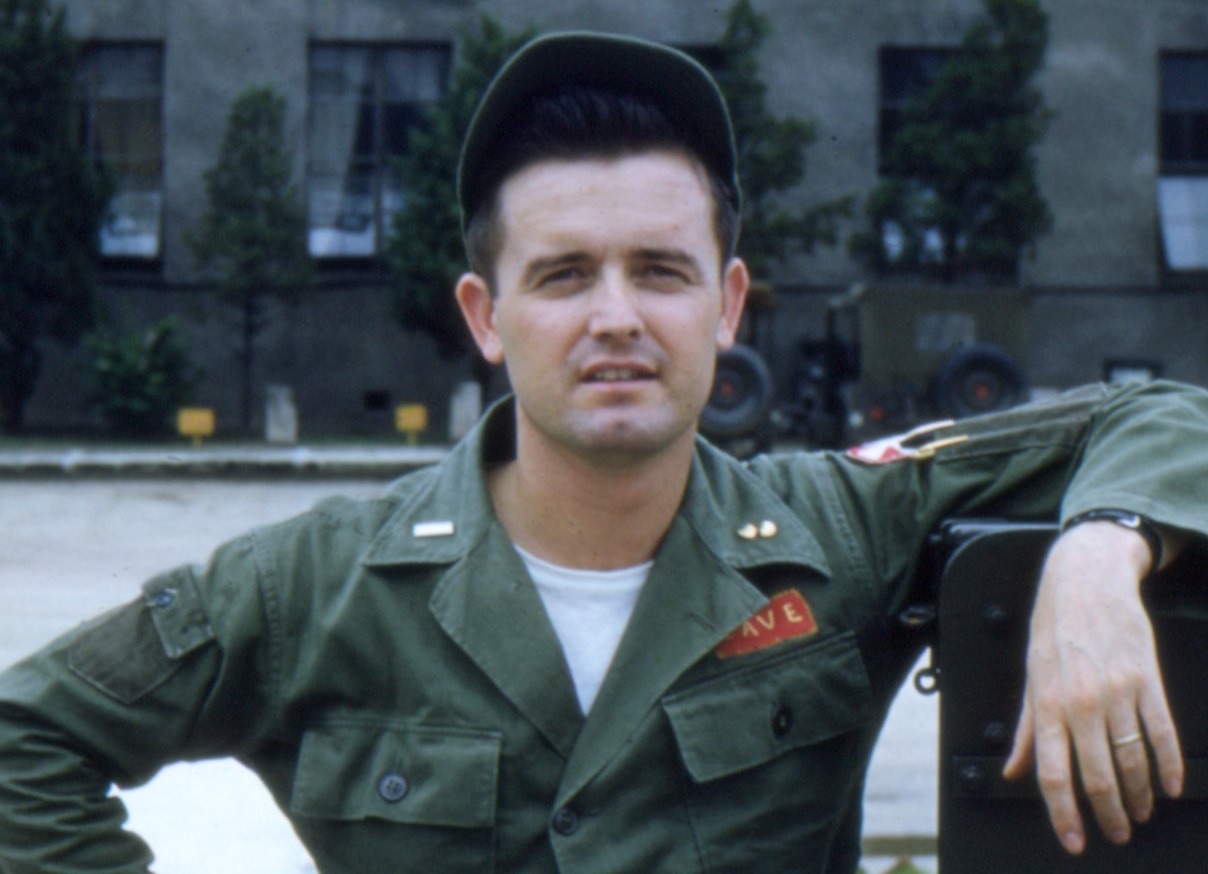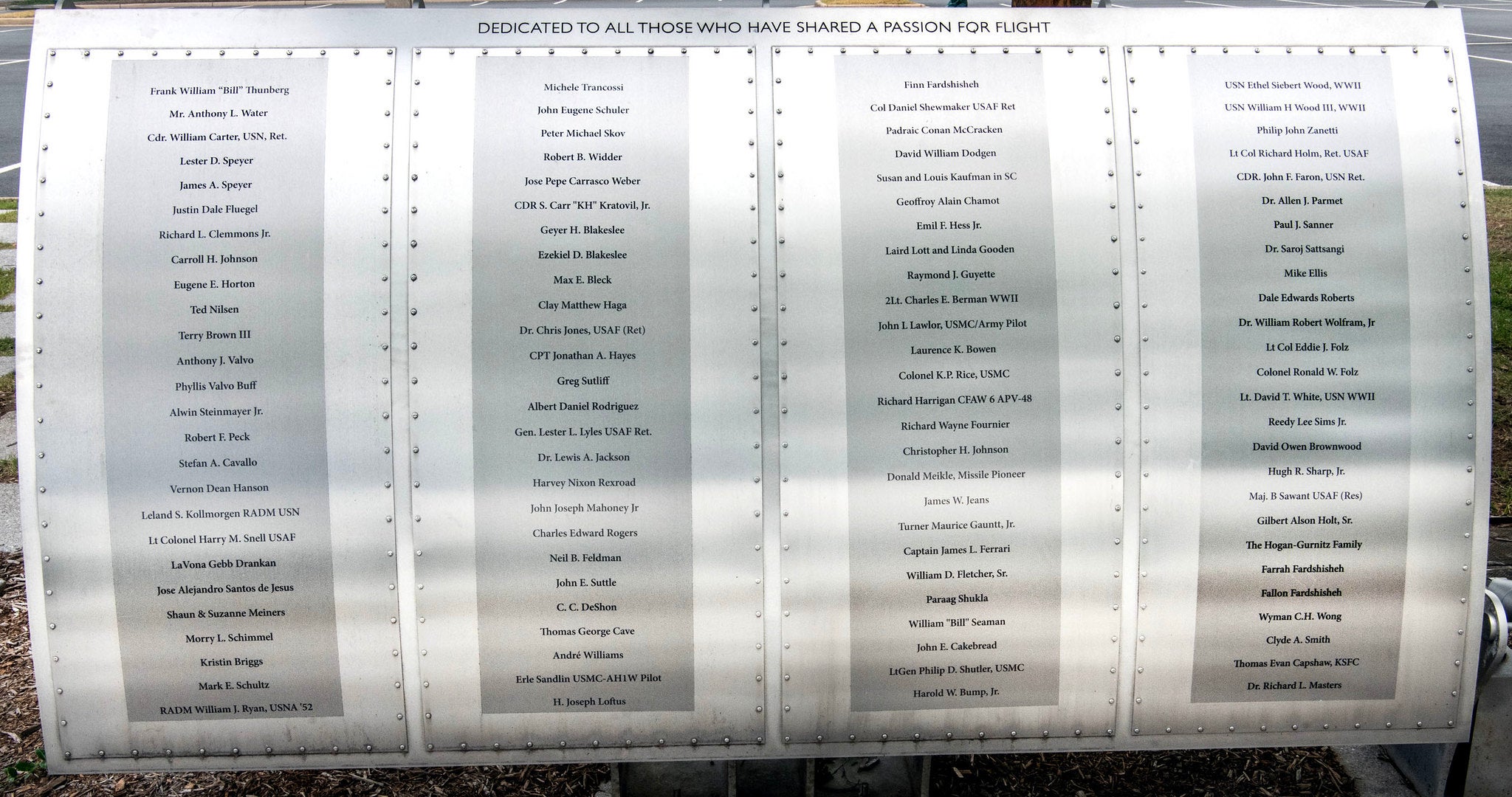Thomas George Cave

Foil: 47 Panel: 2 Column: 1 Line: 23
Wall of Honor Level: Air and Space Leader
Honored by:
Thomas Cave
Thomas G. Cave (Sr.) was born in July, 1924, and enlisted in the US Navy in July of 1942 for WWII. After the war, he attended the Watchmaking Institute in Kansas City, and his diploma qualified him for Officer Candidate School when he enlisted in the US Army. After completion of OCS, he served in Korea and Texas. In early 1955, he went to work for Chance Vought Aircraft, which was then involved in multiple projects at the forefront of aviation and the early space program. As new career opportunities arose, he and his wife Mary Lou, and their family, would pack up and move across country between California, Maryland, Texas, and Virginia.
He started as an electronics and telemetry technician on the ground crew for the F8U Crusader 'Day Fighter', first in Dallas, TX, then at Edwards AFB for its first flight in 1955. In 1957, he worked on the Crusader to be flown by Col. John Glenn for 'Project Bullet', and was on the team who waxed down the aircraft (with car wax) prior to his coast-to-coast supersonic speed run. After that, he joined the ground crew for the F8U-2N prototype, the Night Fighter version of the F8U.
In 1959, Vought was selected as prime contractor for the NASA SCOUT launch vehicle, with orbital launches from Wallops Island, VA. He joined the team and headed to Maryland’s Eastern Shore, where he worked telemetry systems and payload integration to the launch vehicle. He manned a payload console position in the blockhouse during countdown and launch operations for numerous satellites, such as Explorer 9, 13,16, & 23, and atmospheric entry research vehicles such as P21, and RFD 1&2.
In 1964 he returned to the Vought home plant in Texas to work on the XC-142 Vertical/Short Take Off and Land (V/STOL) aircraft, a four engine experimental prototype. An early percursor to later tilt rotor aircraft, it rotated its entire wing 90 degrees while transitioning between horizontal and vertical flight.
In 1965, he went back to the SCOUT program, this time at NASA Langley in Hampton, VA, again working integration of payloads. He worked projects such as the RAM C1 and C2 missions, which demonstrated workarounds for the communication blackout encountered by spacecraft entering the atmosphere. During the RAM re-entry, fluid was injected into the re-entry plasma surrounding it, successfully opening a hole so that radio signals could pass and enable communications throughout the entire re-entry phase.
In 1971, he left the aerospace industry, and he and Mary Lou moved to west central Missouri, where they had originally lived, having experienced first hand significant developments in both aviation and the early Space Age. Not bad for a man born into very poor surroundings in rural Missouri, and who never had the opportunity to graduate from high school. He passed away December 6, 1988.
Wall of Honor profiles are provided by the honoree or the donor who added their name to the Wall of Honor. The Museum cannot validate all facts contained in the profiles.
Foil: 47
All foil images coming soon.View other foils on our Wall of Honor Flickr Gallery
